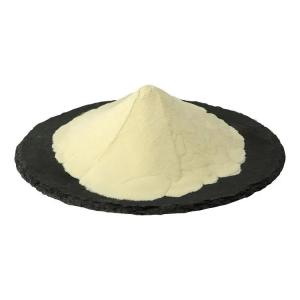News list
News Center
Hot Product
News
Phosphoric acid as part of responsible health choices
Time:2025-10-31
1. Introduction
Phosphoric acid is a widely used compound found in many foods, beverages, and industrial applications. In the context of nutrition and health, it serves as both a functional ingredient and a subject of growing public interest. Understanding phosphoric acid’s role in modern diets encourages individuals and manufacturers to make more responsible health choices that balance functionality with long-term well-being.
2. Functional Role in the Food System
In the food and beverage industry, phosphoric acid is valued for its ability to regulate acidity, enhance flavor, and stabilize products. It is commonly used in soft drinks, processed meats, and dairy products. From a manufacturing perspective, it ensures consistency, safety, and desirable sensory qualities. However, responsible use requires awareness of its contribution to total phosphorus intake and its potential impact on nutrient balance.
3. Awareness in Dietary Choices
Responsible health choices begin with informed dietary decisions. While phosphoric acid provides phosphorus — an essential mineral — its presence in highly processed foods may lead to excessive intake when consumed frequently. Balanced diets should prioritize natural phosphorus sources such as fish, dairy, nuts, and legumes, while moderating the intake of products with added phosphoric acid. This approach supports better nutrient distribution and long-term dietary adequacy.
4. Industry Responsibility and Reformulation
Food producers play a crucial role in promoting responsible phosphorus consumption. Reformulating products to reduce unnecessary additives and improving labeling transparency allow consumers to make more conscious choices. As nutritional awareness increases, industries are adopting cleaner formulations that align with health-centered market trends and global recommendations on phosphorus management.
5. The Role of Education and Public Guidance
Public health initiatives and nutritional education programs can help raise awareness about phosphoric acid and its effects on diet quality. Encouraging consumers to read ingredient labels and understand phosphorus sources contributes to more thoughtful eating patterns. By integrating this knowledge into community nutrition programs, governments and institutions can foster responsible health behaviors that benefit both individuals and populations.
6. Conclusion
Phosphoric acid, when used thoughtfully, can coexist with responsible health choices. Its role in food processing highlights the balance between technological necessity and nutritional responsibility. Promoting awareness, transparency, and moderation ensures that phosphoric acid remains part of a balanced approach to modern nutrition — one that supports both food quality and long-term health.
Phosphoric acid is a widely used compound found in many foods, beverages, and industrial applications. In the context of nutrition and health, it serves as both a functional ingredient and a subject of growing public interest. Understanding phosphoric acid’s role in modern diets encourages individuals and manufacturers to make more responsible health choices that balance functionality with long-term well-being.
2. Functional Role in the Food System
In the food and beverage industry, phosphoric acid is valued for its ability to regulate acidity, enhance flavor, and stabilize products. It is commonly used in soft drinks, processed meats, and dairy products. From a manufacturing perspective, it ensures consistency, safety, and desirable sensory qualities. However, responsible use requires awareness of its contribution to total phosphorus intake and its potential impact on nutrient balance.
3. Awareness in Dietary Choices
Responsible health choices begin with informed dietary decisions. While phosphoric acid provides phosphorus — an essential mineral — its presence in highly processed foods may lead to excessive intake when consumed frequently. Balanced diets should prioritize natural phosphorus sources such as fish, dairy, nuts, and legumes, while moderating the intake of products with added phosphoric acid. This approach supports better nutrient distribution and long-term dietary adequacy.
4. Industry Responsibility and Reformulation
Food producers play a crucial role in promoting responsible phosphorus consumption. Reformulating products to reduce unnecessary additives and improving labeling transparency allow consumers to make more conscious choices. As nutritional awareness increases, industries are adopting cleaner formulations that align with health-centered market trends and global recommendations on phosphorus management.
5. The Role of Education and Public Guidance
Public health initiatives and nutritional education programs can help raise awareness about phosphoric acid and its effects on diet quality. Encouraging consumers to read ingredient labels and understand phosphorus sources contributes to more thoughtful eating patterns. By integrating this knowledge into community nutrition programs, governments and institutions can foster responsible health behaviors that benefit both individuals and populations.
6. Conclusion
Phosphoric acid, when used thoughtfully, can coexist with responsible health choices. Its role in food processing highlights the balance between technological necessity and nutritional responsibility. Promoting awareness, transparency, and moderation ensures that phosphoric acid remains part of a balanced approach to modern nutrition — one that supports both food quality and long-term health.


 CN
CN





